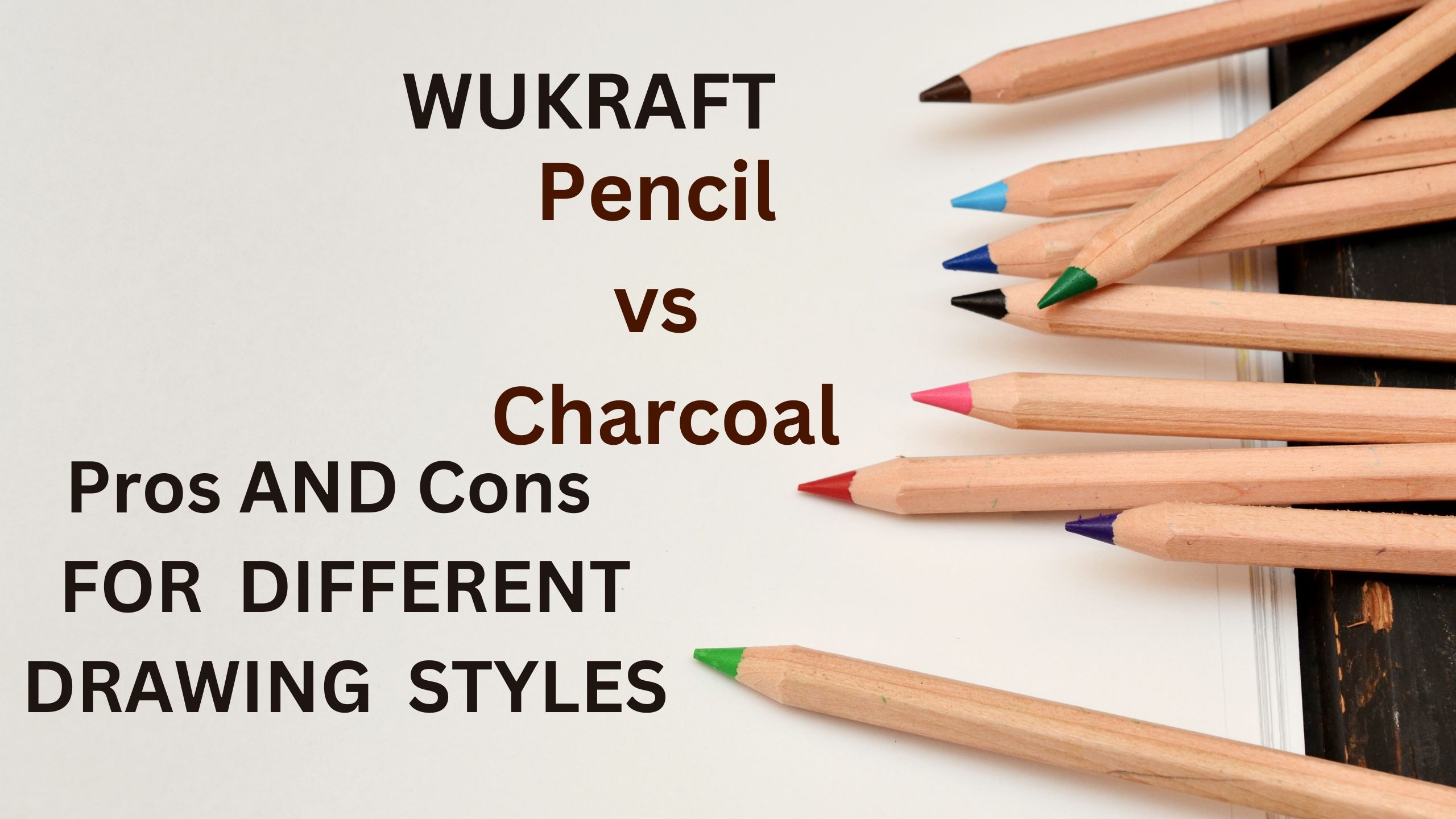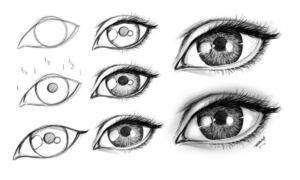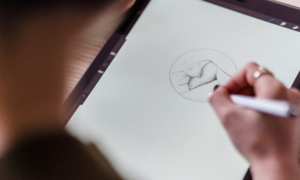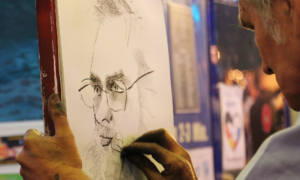The world of art is a realm of infinite possibilities, where creativity knows no bounds. Within this vast and diverse landscape, artists are presented with a plethora of choices, starting with the very tools they use to express themselves. Two such fundamental drawing mediums, pencils and charcoal, have been favored by artists for generations, each possessing its own unique qualities that lend themselves to various drawing styles and artistic visions.
In the timeless debate of “Pencil vs. Charcoal,” artists are confronted with a pivotal choice that can significantly influence the outcome of their creations. This decision is not merely a matter of personal preference; it’s an artistic declaration that can shape the entire character and mood of a piece. In this exploration, we embark on a journey to dissect the pros and cons of these two artistic stalwarts and examine their compatibility with different drawing styles.
Pencils, known for their precision and versatility, are the go-to choice for artists seeking to capture the finest of details with finesse. Their marks, ranging from the subtlest of grays to the deepest blacks, provide artists with a broad spectrum for shading and creating intricate lines. However, the world of pencils isn’t without its limitations; they can sometimes lack the expressive power needed for bolder, more dynamic strokes.
Charcoal, on the other hand, emerges as a rebellious and untamed counterpart. With its bold, expressive marks and deep, dramatic contrasts, charcoal is a favorite among artists yearning to infuse their work with raw emotion and energy. Yet, its unpredictability and messiness can be both a blessing and a curse, making it a challenging choice for those who prefer control and precision in their art.
This exploration aims to dissect the strengths and weaknesses of both pencils and charcoal, shedding light on how each medium can be harnessed to cater to different artistic styles. Whether you are a meticulous realist seeking to capture the intricacies of life, a bold visionary yearning to create powerful, emotive works, or someone who seeks to find the perfect balance between the two, this journey through the world of “Pencil vs. Charcoal” will guide you toward making informed choices that align with your artistic aspirations. So, let’s delve deeper into the realm of artistic expression and understand the endless possibilities that these two time-honored mediums offer.
Pros:
1. Precision:
Pencils are renowned for their precision, making them a favored choice for artists who prioritize detail and accuracy in their work. Here’s why:
- Fine Lines: Pencils, with their narrow, pointed tips, allow artists to create fine lines and intricate details. Whether it’s the subtle contours of a face, the delicate texture of a pet’s fur, or the intricate patterns of a botanical illustration, pencils offer the control needed to bring these details to life.
- Sharpness: Pencil lines can be sharpened to a needle-like point, ensuring that your marks stay crisp and precise, even in the most intricate parts of your composition.
- Hatching and Cross-Hatching: For artists who specialize in hatching and cross-hatching techniques, pencils excel in delivering precise and controlled shading, allowing for the creation of a wide range of tones and textures.
- Technical Drawings: Pencils are indispensable tools for architects, engineers, and technical illustrators due to their precision in creating intricate diagrams, blueprints, and schematics.
However, it’s essential to acknowledge that precision with pencils may sometimes come at the cost of expressiveness. Pencil lines can lack the bold and dynamic quality that some artists desire in their work.
- Charcoal: The Challenge of Precision
Charcoal, known for its bold and expressive characteristics, may not be the first choice for artists seeking precision. Nevertheless, it offers its own unique approach:
- Expressive Sketching: While charcoal is typically associated with bold, gestural strokes, artists with a keen eye and a steady hand can achieve a level of precision through careful control and measured strokes.
- Blending Techniques: Charcoal allows for exquisite blending techniques using tools like blending stumps and tortillons, enabling artists to create smooth gradients and transitions in their drawings.
- Charcoal Pencils: The use of charcoal pencils offers a compromise between the boldness of vine charcoal and the precision of graphite pencils. Charcoal pencils are favored by artists who wish to incorporate charcoal’s expressive qualities while maintaining some level of control and precision.
2. Erasability:
Pencils have earned their reputation as erasable champions. Their erasability is one of the key reasons artists often turn to pencils when precision and the ability to make corrections are essential:
- Precise Corrections: The fine, controlled lines produced by pencils allow for pinpoint corrections. If you make a mistake or need to adjust a detail, a pencil eraser can delicately remove or refine the unwanted mark without disturbing the surrounding areas.
- Clean Erasing: Pencil marks erase cleanly and leave minimal residue. This is particularly advantageous when working on highly detailed or intricate compositions, where precision is paramount.
- Layering and Blending: Pencils allow artists to layer and blend different grades of graphite, creating seamless transitions between tones. Erasing between layers can be done with ease to adjust the level of shading or highlights.
- Mixed Media: Pencils work well with various art mediums, such as colored pencils or watercolors. The ability to erase pencil marks in mixed media applications allows for subtle integration of different media in a single artwork.
While the erasability of pencils is an advantage in many situations, it’s important to note that over-erasing can damage the paper’s surface and, in some cases, affect the final appearance of your drawing. It’s essential to strike a balance between correction and preserving the integrity of the paper.
- Charcoal: A Challenge in Erasability
Charcoal, often celebrated for its bold and expressive qualities, presents a significant challenge when it comes to erasability:
- Limited Erasability: Charcoal marks are not as easily erasable as pencil marks. While it is possible to erase charcoal to some extent using kneaded erasers or specialized art erasers, the process can be less precise and may leave some residue behind.
- Smudging: Charcoal is notorious for smudging. Excessive erasing or overworking the paper can lead to a smeared appearance, making it challenging to maintain the crispness and clarity of your work.
- Loss of Texture: Erasing charcoal can remove some of the texture and depth that charcoal naturally provides, altering the overall character of your drawing.
To overcome the limitations of charcoal’s erasability, some artists use techniques like layering, which involves working from light to dark and reserving the brightest areas. This minimizes the need for erasing and reduces the risk of smudging.
3. Range of Values:
Pencils are renowned for their capacity to produce a broad range of values, making them a preferred choice for artists who require precision and control in their shading. Here’s why pencils excel in this aspect:
- Controlled Gradations: Pencils offer exceptional control over the gradation of tones, allowing artists to smoothly transition from the lightest grays to the deepest blacks. This control is invaluable for rendering the subtle play of light and shadow in realistic drawings.
- Fine Detail: Pencils can achieve extremely light and fine lines, which are crucial for highlighting and detailing. This precision in mark-making extends the range of values by enabling artists to create the most delicate highlights and shadows.
- Layering: Pencils lend themselves well to layering, enabling artists to build up values by applying multiple layers of graphite. This layering technique facilitates the creation of intricate tonal variations and textures.
- Blendability: Pencils can be easily blended using tools like blending stumps or your fingers, allowing for seamless transitions between different shades and the creation of soft, gradual gradients.
While pencils offer a wide range of values and meticulous control, they may require patience and a steady hand to achieve the desired results. The process of building up values with pencils can be time-consuming, but the results are often worth the effort.
- Charcoal: Expressive Contrasts
Charcoal is known for its ability to create deep and dramatic contrasts in a drawing, which is advantageous for artists seeking an expressive and bold approach:
- High-Contrast Marks: Charcoal produces bold, high-contrast marks that easily achieve a broad range of values. Its rich blacks and smudged grays make it ideal for capturing strong shadows and dynamic lighting.
- Quick Coverage: Charcoal covers a larger area quickly, allowing artists to establish a full range of values more rapidly than with pencils. This is particularly useful for those who prefer gestural, expressive sketches.
- Dramatic Effects: Charcoal’s inherent texture and bold marks can add character and drama to a drawing. It excels at creating a moody atmosphere and lending a distinct emotional quality to the artwork.
- Limited Line Weight: While charcoal is excellent for creating values, it may offer less control in terms of line weight and fine details compared to pencils.
4. Portability:
Pencils, being among the most compact and portable art tools, offer several advantages in terms of mobility:
- Lightweight: Pencils are inherently lightweight, making them easy to carry in a pencil case or art bag without adding significant bulk or weight.
- No Mess: Pencils are virtually mess-free. They don’t require additional tools or materials, such as fixatives or charcoal sticks, and they leave no smudges or residue behind.
- Versatile Surfaces: Pencils can be used on a wide range of surfaces, from sketchbooks to loose sheets of paper. This versatility allows artists to adapt to different environments and settings.
- Outdoor Sketching: Pencils are well-suited for outdoor sketching and on-the-spot drawing. Their clean and precise lines make them ideal for capturing details in the field.
- Travel-Friendly: Pencils are a travel-friendly choice for artists who need to create art while on the move, whether it’s during a commute, while traveling, or simply when exploring new settings.
However, it’s important to note that the compactness of pencils can sometimes limit an artist’s ability to achieve expressive and bold strokes, and they may not be the ideal choice for certain styles of art that demand quick, gestural mark-making.
- Charcoal: Expressive but Demanding
Charcoal, known for its expressive and dramatic qualities, offers distinct challenges when it comes to portability:
- Messiness: Charcoal is notorious for its messiness. The smudging and residue it leaves behind require careful handling and additional materials, such as fixatives and protective paper interleaves.
- Bulkier Tools: Artists working with charcoal may need to carry additional tools, such as blending stumps, kneaded erasers, and a variety of charcoal sticks, which can add bulk to their art kit.
- Dedicated Workspace: Charcoal is best used in a dedicated workspace or studio where the mess can be contained and controlled. Creating art with charcoal in public spaces or while traveling can be more challenging due to the need for proper ventilation and space.
- Blending Techniques: The expressive potential of charcoal often relies on the artist’s ability to manipulate and blend the medium, which can be more cumbersome on the go.
- Charcoal: The Power of Bold Expression
Charcoal, on the other hand, is often celebrated for its bold and expressive qualities, making it an ideal choice for artists who aim to imbue their work with emotion and energy:
- Gestural Marks: Charcoal allows artists to create bold and gestural marks with ease, providing an immediate channel for emotional expression. It can capture movement, intensity, and energy in a way that pencils often struggle to achieve.
- Dynamic Textures: Charcoal’s natural texture, coupled with its ability to create a wide range of values, allows artists to convey diverse textures and tones quickly and expressively.
- Expressive Portraits: Charcoal is a favored medium for portrait artists who wish to capture the character and emotion of their subjects. Its ability to produce dramatic contrasts and smudged, atmospheric effects can add depth and impact to a portrait.
- Abstract and Conceptual Art: Charcoal is a versatile medium for artists who create abstract or conceptual pieces. It allows for the freedom to experiment with mark-making, textures, and shapes, making it well-suited for work that pushes the boundaries of traditional representation.
However, it’s important to note that the compactness of pencils can sometimes limit an artist’s ability to achieve expressive and bold strokes, and they may not be the ideal choice for certain styles of art that demand quick, gestural mark-making.
Cons:
- Limited Expressiveness:
Pencils are celebrated for their precision and control, but these very qualities can also limit their expressiveness in certain artistic styles. Here’s how pencils may exhibit limited expressiveness:
- Controlled and Refined Lines: Pencils excel in creating controlled and refined lines, making them ideal for detailed and intricate work. However, this precision may not lend itself well to bold, expressive, or gestural strokes that demand a free-flowing, less controlled approach.
- Detailed Realism: Pencils are often the medium of choice for artists aiming to achieve highly detailed, realistic representations. While this precision is ideal for portraiture, botanical drawings, or architectural renderings, it can be less suited to more abstract, dynamic, or emotionally charged styles of art.
- Challenges in Texture: Pencils can render texture, but the technique required for creating texture with graphite can be meticulous and time-consuming, limiting their ability to express spontaneous, textural qualities often found in certain forms of expressionist or abstract art.
- Limited Boldness: Achieving bold, impactful lines with pencils can be challenging due to the inherent nature of graphite as a medium. Artists seeking to create striking visual statements may find pencils less accommodating.
For artists who prioritize precision, detail, and realism, pencils are an excellent choice. However, those who seek to convey raw emotion, energy, and spontaneity in their work may find the controlled nature of pencils limiting in terms of expressiveness.
Charcoal, on the other hand, is often celebrated for its bold and expressive qualities, making it an ideal choice for artists who aim to imbue their work with emotion and energy:
- Gestural Marks: Charcoal allows artists to create bold and gestural marks with ease, providing an immediate channel for emotional expression. It can capture movement, intensity, and energy in a way that pencils often struggle to achieve.
- Dynamic Textures: Charcoal’s natural texture, coupled with its ability to create a wide range of values, allows artists to convey diverse textures and tones quickly and expressively.
- Expressive Portraits: Charcoal is a favored medium for portrait artists who wish to capture the character and emotion of their subjects. Its ability to produce dramatic contrasts and smudged, atmospheric effects can add depth and impact to a portrait.
- Smudging:
Pencils are favored for their precision and control, which extends to their relatively minimal smudging tendencies. Here’s how pencils handle smudging:
- Clean Lines: Pencils produce clean and crisp lines that are less prone to smudging during the drawing process. This quality is particularly beneficial for detailed work, where maintaining the clarity of lines is essential.
- Erasability: Pencil marks are easily erasable, which means that even if minor smudging occurs, artists can correct and clean up their work without leaving noticeable residue.
- Fixative Use: To prevent smudging after completing a pencil drawing, artists may use a fixative spray to seal the graphite. This protective layer helps preserve the drawing and minimizes the risk of further smudging.
- Handling: Smudging in pencil drawings often occurs due to hand contact with the paper. Artists can minimize this by using a piece of scrap paper or a protective sheet under their hand while working.
While pencils have the advantage of limited smudging, it’s important to note that intense layering or heavy pressure on the paper can still lead to some smudging, especially in areas with dense shading.
- Charcoal: Embracing Smudging for Effect
In contrast, charcoal is notorious for its smudging tendencies, but some artists embrace this characteristic for the expressive effects it can bring to their work:
- Intentional Smudging: Charcoal artists often use smudging intentionally to create soft transitions, atmospheric effects, and to blend tones and textures. Smudging can be a valuable tool in the arsenal of a charcoal artist.
- Dramatic Softness: The ability of charcoal to produce smudged, dramatic softness and blurred lines is a defining feature of the medium. It allows artists to evoke mood and atmosphere in their drawings.
- Fixative Use: To preserve their charcoal work, artists can apply fixative sprays. However, some artists intentionally leave certain areas of their drawing unprotected to maintain the smudged effects in those regions.
- Sealing Charcoal: Framing a charcoal drawing under glass helps protect it from further smudging and deterioration. This is a common practice to ensure the longevity of charcoal artworks.
Learn more about pencil vs charcoal and its pros and cons…
If you found this discussion on the differences between pencils and charcoal intriguing and are interested in exploring more aspects of this artistic dilemma, you’re in luck. We have another insightful blog post that delves deeper into the pros and cons of using pencils and charcoal for various drawing styles. In that blog, we cover topics like precision, erasability, range of values, portability, expressiveness, and smudging, providing comprehensive insights to help you make informed decisions in your artistic journey.
Feel free to check out our companion blog titled “Pencil vs. Charcoal: Pros and Cons for Different Styles” for a holistic understanding of how these two versatile mediums can impact your art and which one might best suit your unique artistic vision and preferences. Happy creating!
Watch this tutorial to know more about pencil vs charcoal:
How to Draw with Graphite and Charcoal
Conclusion:
In conclusion, the choice between pencils and charcoal is not a matter of one being superior to the other; it’s a matter of aligning your medium with your artistic vision and the requirements of your chosen style. Many artists find themselves experimenting with both, as each medium offers unique opportunities for creative expression. The decision ultimately depends on your personal preferences, the style of art you wish to create, and your willingness to adapt to the characteristics of your chosen medium.
Ultimately, your journey as an artist is a path of self-discovery, and the choices you make, whether with pencils, charcoal, or a combination of both, will be an integral part of your artistic evolution. So, choose wisely, experiment freely, and continue to create and explore the boundless possibilities of the art world.




